Content begins here
Contenido de la página principal
Pulsa para colapsar
Camera Movement
In this lesson, we will learn:
1. Why Camera Movement is important
2. Basic Camera Moves: Pan, Tilt, Dolly, Tracking / Trucking, Zoom
WHAT CAMERA MOVEMENT IS
Camera movement refers to a filmmaking technique where a camera shifts to visually narrate and shape a viewer's perspective of a scene. Choosing to move a camera in a certain way, you can also alter the narrative of the story you're trying to tell and the delivery of the content you are presenting.
WHY CAMERA MOVEMENT IS IMPORTANT
Imagine seeing a movie that its camera is still and only from one persective, with no different angles, no transitions and especially no camera movement. Maybe it would be interesting if someone knew how to direct it correctly, but most of the cases, it would be boring. So, that’s why camera movement is very important. Using a variety of different camera moves into your shots, you can add deeper sense of your visual interest. Understanding the effects of the different types of camera movements in film is essential for every filmmaker to understand.
BASIC CAMERA MOVEMENTS
There are a lot of different Camera Movements and many different ways of describing them. We are going to focus on 5 basic ones, which are:
Pan
A pan is when the camera horizontally swivels from a fixed position from right to left or left to right. A pan movement can be used to follow a character’s actions or to reveal more information from one side of a scene to another. By moving across the scene we can see something across or at the end of the movement that we couldn’t see originally. Also, they are great for linking an object of our scene to another. E.g. people’s eyelines to show what they are looking at. A slow pan builds suspence. On the other hand, a quick pan gives more action and energy in your shot. This is called a whip pan.
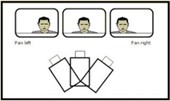
Image Copyright © SekBudapestFilm&MediaStudies
Tilt
In this movement, the camera moves vertically from a fixed position up to down or down to up. Using a tilt move you bring your scene to a shape capturing its’ verticality. It can be used to reveal information or to keep a subject in the center of the frame. Another great usage of the tilt is to reveal scale. Also, tilt can be used to give a character dominance (by starting your movement from low down position and tilting upwards) or vulnerability (using the oposite, up to down).
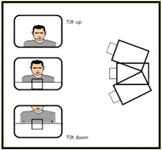
Image Copyright © SekBudapestFilm&MediaStudies
Dolly
The camera smoothly moves forwards or backwards. In this case the camera is smoothly moving out of a scene, still looking forwards, or it can also move towards someone or something. It helps us understand a greater sense of what is going on around our subject.
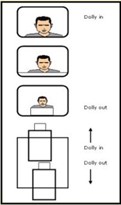
Image Copyright © SekBudapestFilm&MediaStudies
Tracking / Trucking
This is another smooth camera movement, where the camera moves from side to side left to right or right to left but still looks forward. It physically moves the camera through a scene. The difference of the tracking from the other moves is that it doesn’t simply move towards or away from a subject, it moves with the subject. That’s why tracking is great to follow a particular subject. You can use it to keep the character in the frame, but also you can use them to show the environment around the subject. It creates a realistic pace as it gives information or builds tension. When the camera moves laterally, left or right it is referred as Trucking shot.
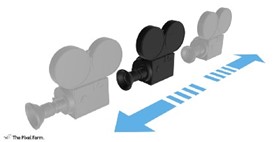
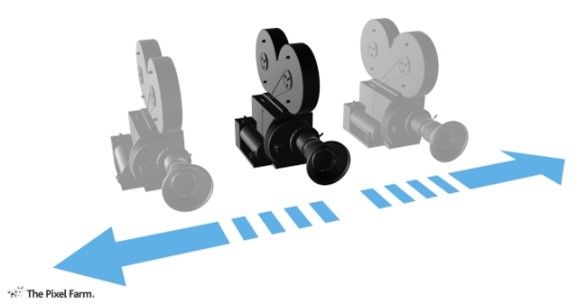
Tracking Shot Trucking Shot
Images Copyright © Medium.com
Zoom
The camera stays still but the camera lens moves closer or further away from the subject. The zoom helps us show the main subject as it’s focusing on it. It helps us give a subject more space of the screen or less of the screen by revealing the context around the subject (if we zoom outwards). A fast zoom is also known as a Crash Zoom. It gives our scene energy.

Image Copyright © tgj3o4.weebly.com
Finally
You can combine several camera techniques to add depth and visual interest to your multimedia based on video.
Conclusions
You should think about which camera movement is the most appropiate for each scene of the story that you want to transmit, taking into account how you want this scene to be perceived.
Video and PDF presentationPulsa para colapsar
The following video explains the content of this lesson and shows some examples:
Here you have the content of the video in pdf in case you need to use it in your classroom:
Pill T3.L1.1 Camera movement basicsPulsa para colapsar
Pill T3.L1.1 Camera movement basics
In this pill you will see several shots with different camera movements:
Pill T3.L1.2 Camera movement for natural heritagePulsa para colapsar
Pill T3.L1.2 Camera movement for natural heritage
In this pill you will learn how to use camera movement in natural heritage:
Lesson contents in PDFPulsa para colapsar
Here you have the contents of the lesson in PDF:

